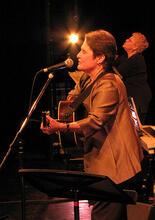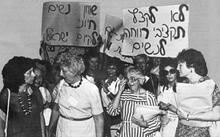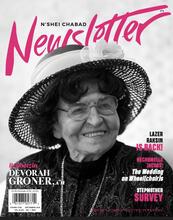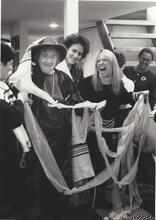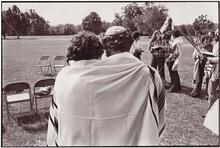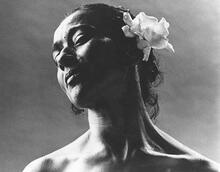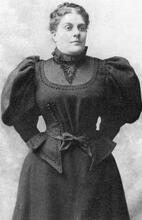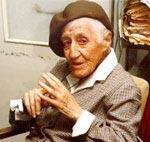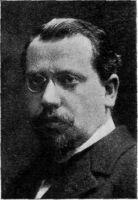Australia: 1788 to the Present
Several Jews, women and men, were among the convicts from Britain who arrived in Australia on the first day of European settlement in 1788. Their numbers were augmented over the ensuing decades by further Jewish settlers, male and female, convict and free. By 1901, when Australia became a federated nation, Jewish communal and congregational life was well established nationwide, in rural localities as well as in cities. Australia was an example of a frontier society in which Jews played a complete and respected part; antisemitism, relatively minor, never hindered male Jews from full participation in Australian life, including public life. During the twentieth century certain determined and entrepreneurial Jewish women made their mark in many fields, and this trend has increased exponentially in the twenty-first.
Jewish Settlement in Australia
Jews have been in Australia from the very start of European settlement. On January 26, 1788, a British fleet of eleven ships anchored in Sydney Cove, under the command of Captain Arthur Phillip, Governor-designate of the proposed British penal colony of New South Wales in the part of southeastern Australia that Captain James Cook had claimed in the name of King George 111 in 1770. Among the just over 750 convicts who disembarked from the "First Fleet" were seven Jewish men and up to seven Jewish women (the Jewish identity of three of the seven women is not proven beyond doubt). Various areas accepted convicts at various times; the final shipments arrived in 1868.
Between 1788 and 1850, approximately 1500 Jews lived in Australia. Of these, about 45 females came as convicts and about 250 were free settlers. The crimes for which the convict women were transported were, as they were for most of the men, petty by today's standards and the penalties draconian. For example, First Fleet convict Esther Abrahams (1771-1846), who became the mistress and ultimately the wife of the lieutenant-governor of New South Wales, was found guilty of robbing a draper of two lengths of lace and was sentenced to transportation for a period of seven years; she brought her infant daughter with her.
During the 1820s, free settler migration, overwhelmingly from the British Isles, began to accelerate, and the foundations of Jewish communal and congregational life in the vast continent were laid by a combination of free settlers and emancipated convicts, or "ticket of leave" men. This process was consolidated by the arrival of more Jewish immigrants as the century progressed, notably during the gold rushes of the 1850s in the colonies of New South Wales and Victoria. Most of the newcomers came from Britain, but there were also Jews from German-speaking lands and from Eastern Europe. Only a few of the nineteenth-century Jewish settlers, both convict and free, were Sephardim, including a convict daughter of the famed London boxer Daniel Mendoza.
The scarcity of Jewish women in the infancy of the Australian colonies led some Jewish men to take non-Jewish wives. In the face of that reality, and the lack of facilities and functionaries necessary for formal conversion, "the earliest Jewish congregations recognised as Jews the children of Jewish fathers.” Somehow or other, the wives of Jewish men were accepted by the congregations. Women changed their first names to those with biblical resonance and were permitted to join the synagogue" (Levi, 2006).
By 1901, when Australia became a federated nation, it had just over 15,000 declared Jewish inhabitants. By 1920, intermarriage, mainly on the part of Jewish men, was leading some observers to question the long-term viability of the Jewish community in Australia. But the mass arrival of Jews from Eastern Europe from the 1920s onwards, combined with refugees from Central Europe, ensured a vibrant future. Over 5000 "thirty-niners" arrived as refugees just before or at the outbreak of World War II. Between 1946 and 1954, 17,000 Jews, mostly Holocaust survivors, arrived from Europe and Shanghai. A significant number came after the Hungarian Revolution of 1956, a further 10,000 arrived by 1961. The Suez Crisis of that same year precipitated an exodus of Jews from Nasser's Egypt. Jews from Middle Eastern countries, even Sephardim of comparatively light complexion, were effectively barred by the White Australia policy, enshrined in the Immigration Restriction Act of 1901 and not repealed until 1972, but an easing of this barrier following representations to government facilitated the entry of several hundred refugees from Egypt. Australian Jewry doubled in size from 23,000 in 1933 to 60,000 in 1966. With the arrival of substantial numbers of Jews from South Africa and the former Soviet Union, there were about 84,000 Jews according to the 2001 Census, with communal leaders believing the actual number to be around 110,000. The Census of 2011 indicated about 112,000 Jews in Australia.
Jewish Women and Work
Until recent decades, Jewish women’s work options were limited by traditional ideas about their primary role and function, as well as by male supremacy in most workplaces. Before coming to Australia some of the transported Jewish women had earned their living, or tried to, by such occupations as dressmaker, straw bonnet maker, and umbrella or parasol maker, before turning to theft or prostitution. Such occupations were replicated in the Australian colonies by emancipists (those transported to Australia under the convict system and then pardoned) and free settlers alike. Few of the people, Jewish or non-Jewish, who went off to the gold mines hoping to find gold discovered any, let alone made their fortunes; the realists reconciled themselves sooner rather than later to the fact that offering goods and services to miners was a wiser option than searching for gold themselves. So they set up as storekeepers, auctioneers and hoteliers, in both town and country.
An entrepreneurial spirit prompted hotelier Hannah Maclurcan (1860-1936) to write cookbooks, Johanna Korner (1891-1961) to became a successful beauty salon proprietor in Sydney, Annie Pura (1894-1982) to became an iconic restaurateur there, and Lillian Frank (b.1936), of Iraqi Jewish heritage, to became a celebrity hairdresser in Melbourne. Governor-General Sir Zelman Cowen's widow Anna is a well-regarded figure. Most notable is Polish-born Helena Rubinstein (1871-1965), who as a young single woman laid the foundations of her eponymous cosmetics empire in Australia. While staying with her storekeeper uncle in rural Victoria, she saw a business opportunity in offering a face cream that helped pale female complexions counter the ravages of the fierce Australian sun, and proceeded with the venture in Melbourne before seeking further markets overseas.
Significant barriers to women’s employment were removed by prime minister Gough Whitlam's government (1972-1975), which ended such institutional employment practices as paying female teachers in state schools less than their male counterparts (a situation rooted in the assumption that a man's wages needed to be sufficient to support a wife and family) and requiring female public servants to resign their jobs on marriage. However, even in professions dominated numerically by women, men still predominated in top administrative posts. Since the Whitlam era, further legislation designed to improve the status of women have come with the Sex Discrimination Act 1984 (Commonwealth) and the Equal Opportunity Act 1999 (Commonwealth), both of which apply Australia-wide. The appointment of Sara Dowse (b. 1938), born in Chicago to Jewish parents, as head of the brand new women's unit in the Department of Prime Minister and Cabinet.
Women in Jewish Philanthropic and Communal Organizations
One of the earliest Jewish charitable organizations created in Sydney was the Sydney Ladies’ Hebrew Benevolent and Maternity Society, founded in 1844 to provide relief for distressed Jewish women. The second women’s organization to be registered formally in Australia, it continued to function until 1981. In Victoria, a similar organization, the Hebrew Ladies’ Benevolent Society, was founded in 1857. By the end of the nineteenth century many other Jewish charitable organizations run by women had been established. In Sydney, these included the Jewish Girls’ Guild, founded by Phoebe Landau, to engage in non-sectarian work, and the Help-in-Need Society, established in 1898. The women who ran these societies were also active in the Montefiore Homes for the Aged, established in Sydney in 1880 and in Melbourne in 1885, as well as participating in non-Jewish charities. Julia Levy (1886–1959), was known for her philanthropy, as was Fanny Breckler (1877–1946), founder of successful shoe stores in Perth. Ida Cohen (1867-1970) of Tamworth in New South Wales typified the contribution that Jewish, like non-Jewish, women could make to their rural regions: she was involved at leadership level in many local organizations, both women's and general, ranging from the Country Women's Association to the Red Cross. Notable philanthropists to many worthy causes, Jewish and non-Jewish, are Melbourne businessmen's wives Eva Besen and Pauline Gandel, and Melbourne businessman's widow Jeanne Pratt, a keen patron of the theater and the arts, who was named Victorian of the Year in 2013.
Since World War II women have dominated the ranks of administrative workers in communal organizations, probably owing to the relatively low-pay positions. They have actively participated in the work of the Australian Jewish Welfare Societies. In Melbourne, Frances Barkman (1885-1946) was the honorary secretary, active in looking after Jewish orphans at the Larino Home, which after her death was renamed in her honor. Eve Mahlab, who was involved in the Welfare Society in Melbourne, headed the 1986 welfare appeal. Janet Simons (1944-1997) came through the ranks of the United Israel Appeal (UIA) Women’s Division to become vice-president of UIA. In Perth, Tirza Cohen served as president of the Council of Western Australian Jewry, and in Canberra Ruth Holzman headed the community during the 1980s. Zosia Mercer (d.1997) was president of the State Zionist Council of Victoria from 1984 to 88. In 1987 Ann Zablud (1920-2006) was elected chair of the Victorian Jewish Board of Deputies, and in 1995 she became the first woman to head a federal organization, the Zionist Federation of Australia (ZFA). From 1996 to 1998 Sydney's Diane Shteinman (b. 1936) was president of the community’s federal umbrella body, the Executive Council of Australian Jewry (ECAJ), followed from 1998 to 2001 by Polish-born Melbourne lawyer Nina Bassat (b.1939).
In Sydney, the National Council of Jewish Women was closely associated with the development of the Wolper Jewish Hospital, one of the first mainstream organizations to have a female president, Lynn Davies. (Ironically, as of mid-2019 the Wolper had twelve male Board members and only three female.) Similarly, the Maurice Zeffert Old Age Home in Perth started as a Council project under the initiative of Edna Luber-Smith. In the late 1960s, NCJW experienced a significant change when its national office moved to Melbourne following the election of Mina Fink (1913-1990), from Bialystok. A dynamic figure, she was on the executives of the Australian Jewish Welfare and Relief Society and the Zionist Federation of Australia and was instrumental in the establishment of the Jewish Holocaust Centre in Melbourne.
The post-war era saw the inception of other women’s organizations, including the women’s B’nai B’rith chapters, of which the Sydney chapter, established in 1945, was the first. Both the United Israel Appeal and, in New South Wales, the Jewish Communal Appeal created separate women’s divisions. In 2019, an initiative was begun to get more women into communal leadership roles. On June 21, 2019, the Australian Jewish News spotlighted the role and status of women in the Australian Jewish community. Having contacted 70 Jewish organizations and institutions across New South Wales and Victoria, as well as thirteen national bodies, a study found a general pattern of underrepresentation of women, outside the all-female NCJW and WIZO (Women’s International Zionist Organization). There were no Jewish day schools in either of the states investigated with equal numbers of women and men on their boards, although three of these had an incumbent female president, as indeed did several of the organizations with a minority of women on their boards. In response to the findings the NCJW in Victoria launched the #MakeSpaceforHer campaign, including a gender equality pledge hopefully to be signed by all Jewish organizations in Australia.
Jewish Women and Israel
Australian Jewish women’s involvement with Jews in Palestine dates back to the early twentieth century. The Victorian Ladies' Zionist League Ha-Tikvah was established by Rose Altson, a Melbourne businessman's wife, in 1905. It operated autonomously for a number of years, resisting calls in 1908 for amalgamation into the male-run Victorian Zionist League. The subsequent assumption by Britain of the Palestine Mandate stimulated philanthropic Zionist efforts. In Brisbane, the visit of a male Zionist fundraising emissary in 1921 led to the creation of the Daughters of Zion, led by the wife of the head of the Queensland Zionist Council. Bella Pevsner's visit in 1923 saw the establishment of a separate women's Zionist League in Perth. Set up in 1927, the Adelaide Jewish Women's National Fund changed its name in 1929 to the Adelaide Jewish Women's National Fund.
In 1923 Russian-born Sydney physician Dr. Fanny Reading (1884-1974), a Melbourne University graduate in both music and medicine, founded the Council of Jewish Women of New South Wales following discussions with Bella Pevsner, a visiting emissary from the Jewish National Fund of Palestine. The Council, of which "Dr. Fanny" was president from its inception until 1931, was dedicated to four ideals: Judaism, the Land of Israel, Jewish education, and philanthropy in both the Jewish and non-Jewish communities. In 1925, it affiliated with the International Council of Jewish Women, of which Reading became vice-president in 1949. Fostered by "Dr Fanny," who travelled widely between 1927 and 1929, the organization spread to all states, leading to the formation in 1929 of the National Council of Jewish Women (NCJW). Vera Cohen (1902-1994), who in 1955 took over NCJW's leadership from "Dr. Fanny," embarked on a three-month travelling fellowship to the United States, an initiative that helped to reduce Australian Jewry’s isolation from the rest of the Jewish world
In 1935, Rieke Cohen (1887–1964) of Sydney founded Ivriah, renamed in 1937 the Women’s International Zionist Organization (WIZO) with prominent feminist Ruby Rich-Schalit (1888-1988) elected inaugural federal president. A key figure in its consolidation federally was Ida Bension-Wynn (1896–1948) from Canada, who married a Melbourne winemaker and veteran Zionist leader. By the time of her death, it had some 4000 members, making it one of the largest and most influential movements within the Jewish community. Its stalwarts included Sydney-based Hannah Kessler (1909-1982) and Melbourne-based Dr. Alice Benfey (1907-1976).
In 1938, Friedl Levi (d. 1994) introduced into Australia the international Jewish rescue organization Youth Aliyah, founded in 1932 to help young Jews settle in Palestine.
In 1939 Ezra, a body concerned primarily with improving maternity facilities in Palestine, was set up. More recently came Emunah, the religious women’s Zionist organization, in which Rachel Leibler (1912-2015), who ultimately made The Day of Atonement, which falls on the 10th day of the Hebrew month of Tishrei and is devoted to prayer and fasting.aliyah , played an outstanding part.
Jewish Women in Politics
As the country developed, Jews joined non-Jews in trade and commerce in the various localities, became respected citizens, and participated in civic life on equal terms with gentiles. But although some Jewish men became mayors, including mayors of major cities, and state and federal parliamentarians, and in 1899 a Jew became premier of South Australia, female success stories were few.
In 1902, the year following Federation, non-aboriginal Australian women over the age of 21 were given the vote. At the state level, South Australia had granted female suffrage in 1894 and Western Australia in 1899, with New South Wales, Victoria, and Tasmania following in 1902, 1908, and piecemeal from 1904 respectively. The 1903 federal election was the first in which women could stand as candidates, and four did so, unsuccessfully. They included the renowned suffragist Vida Goldstein (1869-1949), who was of partial Jewish ancestry. The first Australian Jewish woman elected to a national legislature was Marion Phillips (1881-1932), of a Melbourne family of high achievers; after gaining a doctorate at the London School of Economics she remained in England, serving from 1929 to 1931 as a Labour MP. It was only in 1943 that a woman was elected to the Australian House of Representatives, and another to the Australian Senate.
The second wave feminism that began in the United States in the 1960s and gained traction in the 1970s saw the publication of feminist critiques of women's place, past and present, in Australian society. In 1972 the Women's Electoral Lobby was founded, first in Melbourne and then in Sydney, for the purpose of interviewing all candidates for the 1972 federal elections about their attitudes to issues associated with the advancement of women. Among its leading figures were two Jewish women, Eva Cox and Eve Mahlab, both born in Vienna. An agnostic and humanist, Cox, a sociologist, was one of the most prominent feminists and social commentators in Australia. In 1968, Mahlab (b. 1937), Melbourne University law graduate, started a home-based business for the recruitment of lawyers, which grew exponentially; in 1975 she made the first of three unsuccessful bids to be Liberal Party candidate for a seat in federal Parliament, and in 1982 she was named Bulletin/Qantas Businesswoman of the year.
The first Jewish woman elected to Australia's federal Parliament (consisting of the House of Representatives and the Senate) was Sydney physician and media favorite Dr. Kerryn Phelps (b.1957), elected an MHR in 2018. From 2000 to 2003, Dr. Phelps had been president of the Australian Medical Association, the first female in that post. A convert to Judaism, she was deputy mayor of Sydney when she narrowly won election as an independent to the House for the normally Liberal seat of Wentworth, following prime minister Malcolm Turnbull's resignation of the seat in 2018. However, the seat reverted to the Liberals at the 2019 general election. In January 2018, shortly after the 2017 legalization of same-sex marriage in Australia, she married her Jewish partner at Sydney's Emanuel Synagogue; they had already married in a civil ceremony in New York in 2011.
Social welfare activist Leah Kloot (1886-1962) stood unsuccessfully in 1937 as an independent candidate for the Victorian Legislative Assembly. In 1971 Melbourne-born Dawn Lawrie (b.1938) became the first Jewish female member of an Australian legislature when she was elected a member of the Legislative Council (MLC) of the Northern Territory (NT), its second woman member. An independent, she served until 1983. Subsequently, she served as the NT's Human Rights Commissioner and its Anti-Discrimination Commissioner. Her daughter Delia Lawrie (b.1966) served as a Labor member of the Legislative Assembly (MLA), from 2001 to 2015. The first Jewish woman elected to state parliament in New South Wales was Margaret Davis (b.1933), who became a Liberal MLC in 1966. She relinquished her seat in 1978 to run for election to the Legislative Assembly, but the large swing necessary for victory did not eventuate. In Victoria, Lynne Kosky (1958-2014), a qualified social worker and former municipal mayor who was a Labor MLA from 1996 until her resignation in 2010, achieved ministerial office and a high profile. So did fellow Jew Marsha Thomson (b.1955), a Victorian Labor MLC from 1999 to 2006 and an MLA from 2006 to 2018. In 2009 lawyer Jennifer Huppert (b.1962) was appointed to the Victorian Legislative Council to replace a retiring Labor member, but she was defeated in the 2010 election. She later become president of the Jewish Community Council of Victoria (JCCV), formerly known as the Victorian Jewish Board of Deputies (VJBD). In the Australian Capital Territory (ACT), Karin MacDonald (b.1969), a teacher by training whose maternal grandparents were refugees from Nazi Germany and whose father converted to Judaism, was a Labor MLA from 2001 to 2008.
Jewish Women in the Professions
Australian Jewish Women’s low numbers belie what they have achieved, and continue to achieve. In 2015 Melbourne lawyer Linda Dessau (b.1953) became the first woman and the first Jew appointed to the vice-regal (an office of state under the Crown) position of governor of Victoria. Past eminent Jewish female members of the Australian legal profession include Melbourne's Joan Rosanove (1896-1974), the first woman called to the Bar in the state of Victoria; Nerida Goodman (1912-2002), the second woman and first Jewish woman called to the Bar in the state of New South Wales; and Sydney-born Melbourne-based lawyer Judith Cohen (1926-2012), the first female commissioner of the Commonwealth Conciliation and Arbitration Commission, which oversees industrial relations. Acquiring judicial status in 1980 when she became one of its deputy presidents, she retired in 1991. Her daughter, Susan Cohen, became a judge of the County Court of Victoria in 2001. Lynnette ("Lynne") Schiftan (1942-2016) was appointed a judge of the County Court of Victoria in 1985. Annabelle Bennett (b. 1950) completed a PhD in biochemistry before embarking on law studies that would lead to an eminent career in the judiciary. Known particularly as an expert in intellectual property law, she was a judge of the Federal Court of Australia from 2003 to 2016, and afterwards became chancellor of Bond University in Queensland. Deborah Glass (b. 1959), an alumna of Melbourne's largest Jewish day school, Mount Scopus College, who graduated in law from Monash University, became a commissioner with the Independent Police Complaints Commission in London. In 2014 she was appointed Victoria's state ombudsman for the fixed term of ten years.
Women specialising in particular aspects of the law include South African-born and educated Dr. Rosalie Balkin (b. 1950), a distinguished expert in international maritime law, and Professor Kim Rubenstein (b. 1965), an authority on Australian constitutional law who since 2006 has been director of the Centre for International and Public Law at the Australian National University (ANU) and was inaugural convenor (2011-2012) of the ANU Gender Institute. Russian-born Sydney lawyer Anna Frenkel (1911-2001), who arrived in Australia from Shanghai, was a published authority on family law and gained a PhD on difficulties facing Soviet Jewish emigrants trying to integrate in Australia. High-profile Sydney lawyer Teofila ("Totti") Cohen (1932-2010) was president of the Parents' and Citizens' Associations of New South Wales from 1973 to 1980 and chaired the state's Privacy Committee from 1983 to 1993.
Linguist Gladys Marks (1883-1970), was the first woman lecturer in the Faculty of Arts at Sydney University. Fanny Cohen (1887-1975) became headmistress of a select state girls' school in Sydney. Sophia "Zoe" Benjamin (1882–1962) founded the kindergarten movement and the Sydney Kindergarten Teacher’s Training College. Lillian de Lissa (1885-1967) was a kindergarten pioneer in Adelaide. Danielle Charak (b. 1939) and Dr. Miriam Munz (b. 1949) are among the best-known Yiddish language educators in Melbourne, with its large number of Jews of East European background
Constance Ellis (1872-1942) was, in 1903, the first woman to qualify as a medical doctor at Melbourne University. Hungarian-born Clara Lazar Geroe (1900-1980) was a pioneer Melbourne psychiatrist; Dr Sandra Hacker (b. 1946) is a leading present-day one. Widely published medical researchers include obstetrician Associate Professor Sandra Lowe and dermatologist Associate Professor Gayle Fischer (b. 1953). Professor Rhonda Galbally (b.1948) is a very eminent and commensurately decorated specialist in health care and policy. Lisa Jackson Pulver (b. 1959), an indigenous Australian who converted to (Orthodox) Judaism in 2004, is professor of public health and community medicine at the University of New South Wales. Polish-born Halina Rubinsztein-Dunlop (b. 1950), professor of physics at Queensland University, is an internationally recognised expert in optics, laser spectroscopy, and associated fields. Dutch-born Professor Gilah Leder, who arrived in Australia in 1953, is an award-winning mathematician. Emeritus Professor Bettina Cass (b. 1940), of Sydney, is a feminist sociologist much concerned with social welfare policy. Fleur Spitzer (b. 1931), a veteran social justice activist, used a legacy from her mother, Alma Joske, to fund the Alma Unit for Women and Ageing, Australia's earliest multidisciplinary research and teaching unit concerned with the health and well-being of women aged 65 and over; it opened in 1993 at Melbourne University, later relocating to another local academic institution, and closed in 2005. Vienna-born dress designer Eva Bacon (1909–1994) was a left-wing feminist activist in Queensland. Erika Spivakovsky (née Lipsker), German-born and educated, arrived in Australia from London in 1934, the wife of Odessa-born concert violinist Tossy Spivakovsky. The author of a doctoral thesis on Italian, Spanish, and French pastoral literature, she had been appointed instructor in Spanish at Melbourne University in 1936.
Leah Mann served as the Deputy Director General of the South Australian Department of Community Welfare from 1985 to 1989. She later became State Librarian of Victoria. From 1994 to 2001, she was the CEO of the national philanthropic organization then known as the Queen Elizabeth Silver Jubilee Trust for Young Australians. In 2018, she was appointed a Member of the Order of Australia (AM), “for significant serve to community welfare and youth organisations, to library services and to public administration.”
Sophie Caplan (1933-2018), a German-born Holocaust survivor who arrived in Sydney in 1947, became a noted Holocaust educator. In 1991 she founded the now flourishing Australian Jewish Genealogical Society. Dr. Barbara Falk (1910-2005) was a Melbourne University historian of education whose works included 'Caught in a Snare': Hitler's Refugee Academics (1998). Academically trained women historians with PhDs, Hilary Rubinstein (b. 1946) and Suzanne Rutland (b. 1946), wrote the first comprehensive accounts of the Australian Jewish community. Dr. Helen Light (b.1948) was inaugural director of the highly regarded Jewish Museum of Australia, succeeded by Rebecca Forgasz.
In 2011, the Australian Jewish News published a list of the 50 most influential Jews in Australia, based not on "fame or wealth" but on "contributions to society in general or within specific spheres, such as medicine and media, commerce and the community." Only seven women made the grade. They were Louise Adler (b. 1954), the daughter of Holocaust survivors from Paris, a sometimes controversial publisher, most recently heading Melbourne University Press and now Hachette; like Eva Cox, who was also among the seven, she is a recurring panellist on ABC television's current affairs discussion program Q&A. The other five were Professor Suzanne Rutland, chair of Sydney University's Department of Hebrew, Biblical and Jewish Studies, who has published widely on the history of Australian Jewry; Jackie Frank, founding editor (1995) of Marie Claire in Australia; Mia Freedman (b. 1971), who in 1996 became editor of Australian Cosmopolitan magazine and in 2007 began the Mamamia website; and businesswomen Camilla Freeman-Topper (b. 1981) and Jillian Segal.
Jewish Women in the Arts
Sara Levi (1870-1942), who studied at Melbourne’s National Gallery School and under renowned Australian Jewish artist E. Phillips Fox, was a flower painter, landscapist, and copper worker. Born in Hamburg to visiting Melbourne parents, the affluent Hallensteins, Lina Bryans (1909-2000) was an award-winning modernist painter, of both landscapes and portraits. Vienna-born to Hungarian parents, Sydney portraitist Judy Cassab (1920-2015) became in 1960 the first woman awarded the prestigious Archibald Prize, Australia's foremost award for portraiture, and won it again in 1967. In 2018 the Archibald Prize, still almost exclusively the preserve of men, was won by Yvette Coppersmith (b.1980), an alumna of Melbourne's Yiddishist day school, who had been a finalist four times previously. In pre-war Vienna much admired Melbourne-based painter and designer Slawa Duldig (1901-1975), wife of an eminent sculptor with whom she moved to Australia, invented and patented the folding umbrella, the royalties of which were appropriated by the Nazis. Mirka Mora (1928-2019), born in Paris to East European Jews, moved to Melbourne with her art dealer husband in 1951, going on to make a profound impact on the art and cultural scene with her innovative paintings, sculptures and mosaics. Camille Fox (b.1947), of Sydney, born into the Mars family of Alexandria, Egypt, is much loved for her vibrant humorous paintings, especially her nostalgic depictions of Jewish life in Egypt. Odessa-born Margarita Krivitsky (b.1958), of Melbourne, is an art teacher whose canvasses inspired by Alice in Wonderland have received wide attention. Theodora Cowan (1868-1949) and Tina Wentcher (1887-1974) were noted sculptors. Gertrude Langer (1908-1984) was an influential art critic.
Involved in Melbourne theatrical productions until her marriage in England in 1902, Diana Bloustein (1872-1942) was also a talented painter in oils and keen exhibitor. Lena Brasch and Julia Loel were other actresses of the time. Stephanie Deste (1901-1996), from Belgium, was a flamboyant actress, broadcaster, and beautician in Melbourne. Pioneers of the still flourishing Yiddish theatre in Australia included the actresses Rose Brilliant (c.1893-1984) and the illustrious Rachel Holzer (1899-1998), who had already made her name in Europe. Fay Mokotow (1946-1984) acted in both Yiddish and general productions, her blossoming career cut short by her early death. Deidre Rubenstein (b.1948) has had many theatrical, television, and movie roles. Evelyn Krape (b.1949) is also a well-known actress. Rachel Berger, of the same generation, is a well-known comedian. Internationally renowned playwright Joanna Murray-Smith (b.1962), while not professing Judaism, is the daughter of a Jewish mother. Evelyn Rothfield (1910-2006), a lifelong leftwing political activist who served as publicity officer for the now long defunct post-war Jewish Council to Combat Fascism and anti-Semitism, wrote plays and short stories, including The Snake Pit, the story of a Holocaust survivor, which was staged at a not-for-profit Melbourne theatre.
Florence Menk-Meyer (1860-1946) was an acclaimed pianist, composer and soprano who first made her name overseas. Other noted musicians include composer Mirrie Hill (1889-1986), pianist and composer Linda Phillips (1899-2002), pianist Alice Carrard (1897-2000), and pianist, singer, and former children's television presenter Nehama Patkin (1939-2010). Miriam Morris has had a distinguished career as a cellist and a visual artist. Soprano Lalla Miranda (1871-1940), daughter of a synagogue choirmaster, was an Edwardian-era stage star. Modern popular singers include Renée Geyer (b.1953), known for her rich soulful tones, and Deborah Conway (b.1959), a rock singer and guitarist. Marianne Mathy (1890–1978), was a well-known teacher of singing in Sydney. Gertrud Bodenwieser (1890-1959), Ruth Galene (1929-2016), and Margaret Lasica (1926-1993) were influential dancers. Freydi Mrocki (b.1960) is a well-known Yiddish singer in Melbourne.
Julie Blitz (d. 1923) authored Digger Dick's Darling, and Other Tales (1888) and An Australian Millionaire (1893), both published in London. Rebecca ("Ray") Phillips (1872-1942) authored The White Feather (1917) and several short stories. Poet and prose writer Nancy Keesing (1923-1993) chaired the Australian Literature Board. Jean Holkner (1926-2006), who taught creative writing in Melbourne, was a versatile writer known famed for her fiction for children and young adults. Polish-born Holocaust survivor Maria Lewitt (b.1924) wrote the award-winning autobiographical novels Come Spring (1980) and No Snow in December (1985). Melbourne-raised New York-based Lily Brett (b. 1946), born in a Displaced Persons’ camp in Germany, is a celebrated novelist, poet, and essayist who won the Victorian Premier's Award for Poetry in 1987 for The Auschwitz Poems (1986). Her sister Doris Brett (b.1950), a clinical psychologist, is also an author. Yvonne Fein (b. 1953) is a well-known Melbourne writer and editor close to the Yiddish-speaking community.
Novelist Andrea Goldsmith (b. 1950) is noted for her rich characterization; her Jewish-themed The Prosperous Thief (2002) was shortlisted for the prestigious Miles Franklin Literary Award. Sara Dowse's novels include Sapphires (the Australian Capital Territory's 1995 Book of the Year) and As the Lonely Fly (2017), both Jewish-themed. Physician Dr. Leah Kaminsky's first novel, The Waiting Room (2015), won the prestigious Voss Literary Prize. Dr. June Factor (b.1936), a specialist in early childhood education, has authored several well-known children's books; she is a former president of both the Australian and Victorian Councils for Civil Liberties. Anna Fienberg (b.1956) is an award-winning children's writer. Screenwriter Marcia Hatfield (1928-2019) had particular success with her television series for children. Academic Fay Zwicky (1933-2017) was a prolific and multi-award winning writer of poetry, much of it autobiographically themed. Judith Rodriguez (1936-2018) was an academic and a much-lauded poet, as was Sydney psychotherapist and sometime Communist Marjorie Pizer (1920-2016).
Lausanne-born writer and director Monique Schwarz (b.1943) has made such films as Bitter Herbs and Honey (1996), which examines Yiddish-speaking Jews' settlement in the inner Melbourne suburb of Carlton during the twentieth century and its impact, Mamadrama: The Jewish Mother in Cinema (2001), and Beyond Paranoia: The War Against the Jews (2015). Bitter Herbs features, among others, Rose Brilliant's daughter Miriam Kuna (d. 2013), well-known in Melbourne's fashion industry, who in the year of her death published Medusa Wins, a sparkling anthology of memories.
Shanghai-born Dagmar Strauss, who moved to Melbourne in 1946 with her German refugee parents, was a presenter and producer with the Australian Broadcasting Commission (ABC), Australia's national broadcaster, before settling in Jerusalem in 1992 as a freelance journalist. She has authored a memoir and a book about her parents. Journalist Ramona Koval (b.1954), born to Yiddish-speaking Holocaust survivors in Melbourne, has written several books including a novel, and from 2006 to 2011 presented The Book Show on the ABC's Radio National. Sandra Levy, who joined the ABC in 1972, was appointed its director of programs in 2001. In 1984 she devised and produced a mini-series, “Palace of Dreams,” which was based on her family’s immigration experiences in Australia during the Great Depression. Author and former academic Dr. Rachael Kohn (b. 1953), from Toronto, retired in 2019 as the much acclaimed presenter of radio programs on religion and spirituality for the ABC. Libbi (Lisbeth) Gorr (b.1965), a Melbourne law graduate, performed with all-female cabaret group the Hot Bagels and became famous as comic interviewer "Elle McFeast" on ABC television in the 1990s.
Journalists have included Zara Aronson (1864–1944), Caroline Isaacson (1900-1962), Lillian Roxon (1932-1973), Elizabeth Wynhausen (b.1946), and Ruth Ostrow (b.1960), author of The New Boy Network: Taking over Corporate Australia (1987) and a popular columnist on The Australian newspaper. Eve Symon (1928–1982) and Susan Bures (b. 1946) served as editors of the Jewish press in Sydney. A number of Holocaust memoirs have been written by women, and prominent among educators about those dark times was Melbourne survivor Henrietta ("Kitia") Altman (1922-2017).
Jewish Women in Sports
Notable Jewish sportswomen on the general Australian scene include Vienna-born tennis star Eva de Jong-Duldig (b. 1938), who reached the Wimbledon ladies' doubles quarter finals in 1961 and, when living in the Netherlands with her Dutch husband, won the Dutch singles and doubles championships in 1962. Marseilles-born Jessica Fox (b. 1994) is a champion canoeist who won a silver medal at the 2012 Summer Olympics and a bronze in 2016. Other outstanding Jewish female athletes are Australian women's bobsled team pilot Ashleigh Werner, race walker and 2017 Commonwealth Games gold medallist Jemima Montag, rhythmic gymnast Alexandra Kiroi-Bogatyreva, who has won two Commonwealth Games bronze medals, and Leora Yates, winner of a gold medal at the 2018 International Weightlifting Federation's Masters World Championship. Naomi Wolinski (1881-1969) became well known as a lawn bowls champion and administrator. The concept of combined Jewish interstate sports competitions was introduced in 1924 by Hannah Hart (1894–1983) in a letter to Sydney's Hebrew Standard. The idea caught on, and in January 1925 Sydney sent a cricket team to Melbourne. This was the start of regular interstate competitions, which gradually included all sports, with many female participants.
Women’s Involvement in Jewish Religious Life
Arguably the most remarkable religious effort of Jewish women in Sydney in the nineteenth century was their assistance in the building of the Great Synagogue. A spectacular bazaar raised close to one fifth of the total cost of the building, which was opened in 1878. Despite this contribution, women had no say in the synagogue’s management, though a number of unsuccessful attempts were made to allow women to vote at its annual meetings.
Hoping to stem the tide of intermarriage with services that were intelligible to Jews with a limited grasp of Hebrew, Melbourne widow Ada Phillips (1862-1967), supported by her daughters, was the driving force behind the foundation, in 1930, of the first Liberal synagogue in Australia, which became known as Temple Beth Israel. Its membership was swelled by refugees from Nazi Germany who were used to Reform Judaism and were attracted by a rabbi from Germany who arrived in 1936. In 1981 the Temple appointed Karen Soria (b.1952) as assistant rabbi; she subsequently returned to her native United States. From the beginning, women were accepted, at least in theory, as equals in all facets of Temple life, including eligibility for membership of the Board of Management. But it was not until the 1980s that women would begin to take leadership positions outside the "ladies' auxiliary" in any numbers. Ada Phillips had been "honorary life president," but the first woman to be president on the same terms as men was Lorraine Topol (1946-2014) from South Africa, a generous benefactor of the Temple. By the early 21st century, the participation of women at the lay helm of the Temple and other Progressive synagogues in Australia was so commonplace that it excited no comment. And the Progressive movement, which has spread to all states, has been served by a number of female rabbis over the years, notably Linda Joseph (b. 1963) and Aviva Kipen (b. 1952), both born in Melbourne, Jackie Ninio (b. 1967), from Adelaide, and Kim Ettlinger (b. 1976), born in South Africa, who is on record as saying that occasionally someone requests a male rabbi, but not often.
Jewish women have played a disproportionately significant role in the development of Jewish education and culture. In Jewish schools, most of the Jewish Studies and Hebrew teachers are female. Women are also at the cutting edge of the development of the Florence Melton Adult Education program in both Sydney and Melbourne. This vital new development expanded rapidly under the leadership of Peta Jones Pellach (b. 1954) and Susie Klein (b. 1936) in Sydney, and Sandy Benjamin (b. 1949), Brenda Kahan (b. 1941), and Liberal (Progressive movement) rabbis Aviva Kipen and Kim Ettlinger in Melbourne.
Among the women in lay leadership roles in Australian Orthodox synagogues is Professor Lisa Jackson Pulver, mentioned above. Married to a Jew, she had an Orthodox conversion and in 2010 became the first female president of the Newtown Synagogue in suburban Sydney. Before relocating to Melbourne and becoming Victoria's state librarian, Leah Mann served a member of the Board of Adelaide Hebrew Congregation, one of the first two women elected to the Board after the Synagogue changed its constitution to allow women to serve. In Melbourne, Mandi Katz is president of the Shira Hadasha congregation, which operates within a halachic framework while placing emphasis on gender equality in the conduct of services, as well as on social activism. There have been important steps towards increased opportunities for Orthodox Jewish women within the religious framework. Among the most important developments is the establishment of women’s tefillah groups, beginning in Sydney in 1989, and opportunities for women’s Jewish learning. In addition, the difficult issues of the Writ of (religious) divorceget (divorce), Mandated ceremony (Deut. 25:9halizah, and marriage, have been canvassed through petitions at both the national and international level, largely organized by the NCJW. In 1996, a new Orthodox congregation striving for full equality was formed in Melbourne. In order to create many levels of resonance, its founders chose the name HaMakom, both as one of God’s names and also for its meaning—"the place." Its mission statement stresses that it defines itself by its commitment to operating within a halakhic framework. Women in the hasidic world have also been seeking a more active role, particularly within Habad, the strongest hasidic sect in Australia. In Melbourne, under the leadership of Miriam Cowen (b. 1953), they developed their own learning programs, and the same occurred in Sydney. Music is also an important vehicle through which Habad women have been able to express themselves.
Newspapers and Reports
Australian Jewish Chronicle.
Australian Jewish Herald.
Australian Jewish News.
Australian Jewish Times.
Council of Jewish Women, New South Wales, Minutes, 1923–1960.
Groden, Joy. A History of WIZO in New South Wales. Typescript, archives of Australian Federation of WIZO, Beth WIZO, Sydney, 1–14.
Hebrew Standard of Australasia.
Sydney Jewish News.
Melbourne Women’s Tefilla Group’s summary sheet of developments over the two years of its activities from 1999 for its second Sunday Morning Forum, 22 July 2001.
Program, "A Sense of Place: Victoria’s Multi-Faith Religious Celebration." Leaders of Faith Communities Forum: Victoria, 2001.
Books: Jews in Australia
Barda, Racheline. Egyptian-Jewish Emigrés in Australia. New York: Cambria Press, 2011.
Bittman, Karl, ed. Strauss to Matilda: Viennese in Australia 1938–1988. Sydney: Wenkart Foundation, 1988.
Cohen, Lysbeth. Beginning with Esther: Jewish Women in New South Wales from 1788. Sydney: Ayers & James Heritage Books, 1987.
Freilich, Max. Zion in Our Time: Memoirs of an Australian Zionist. Sydney: Morgan Publications, 1967.
Grove-Pollak, F., ed. The Saga of a Movement: WIZO 1920–1970. Department of Organization and Education of WIZO: 1970.
Hammer, Gael, ed. Pomegranates: A Century of Jewish Australian Writing. Sydney: Millennium, 1988.
Lake, Marilyn. Getting Equal: The History of Australian Feminism. Sydney: Allen & Unwin, 1999.
Levi, John S. These Are the Names: Jewish Lives in Australia 1788-1850. Carlton, Vic.: Melbourne University Publishing, 2006.
Levi, John S., and G.F.J. Bergman. Australian Genesis: Jewish Convicts and Settlers 1788-1860. 2nd ed. Carlton, Vic.: Melbourne University Publishing, 2002.
Liberman, Serge. Bibliography of Australasian Judaica 1788-2008. Melbourne: Hybrid Publishers, 2011.
Newton, Marlo L. Making A Difference: A History of the National Council of Jewish Women of Australia. Melbourne: Hybrid Publishers, 2000.
Rubinstein, Hilary L. Chosen: The Jews in Australia. Sydney: Unwin Hyman, 1987.
Rubinstein, Hilary L. The Jews in Australia: A Thematic History, Vol. One: 1788–1945, and Rubinstein, William David. Vol. Two: 1945–1990, Melbourne: W. Heinemann, 1991.
Rubinstein, Hilary L. The Jews in Victoria, 1835–1985. Sydney: Jewish Museum of Australia, 1986.
Rubinstein, William D. The Jews in Australia. Melbourne: AE Press, 1986.
Rutland, Suzanne D. Edge of the Diaspora: two centuries of Jewish settlement in Australia. 3rd ed. Sydney: Brandl & Schlesinger, 2001.
Rutland, Suzanne D. The Jews in Australia. Cambridge: Cambridge University Press, 2005.
Sharpe, Lionel. A History of Giving: The Melbourne Hebrew Ladies [Benevolent Society] from 1857. Ormond, Vic.: Hybrid Publishers, 2007. Booklet sized.
Silberberg, Sue. A Networked Community: Jewish Melbourne in the Nineteenth Century. Carlton, Vic: Melbourne University Press, 2020.
Books: Jewish women and politics.
Biography and Autobiography
Caetoni, Leon. The Art of Sara Levi. Melbourne: Edward A. Vidler, 1921.
De Jong-Duldig, Eva. Driftwood: Escape and Survival through Art. Melbourne: Australian Scholarly Publishing,2017
Forwood, Gillian. Lina Bryans: Rare Modern, 1909-2000. Carlton, Vic: Melbourne University Publishing, 2003.
Foster, John, ed. Community of Fate: Memoirs of German Jews in Melbourne. Sydney: Unwin Hyman, 1986.
Freeman, Damien. The Aunt's Mirrors: a memoir. Blackheath, NSW: Brandl & Schlesinger,2014.
Freidin, Vera. Zachor, I Remember: Will You? Melbourne: CreateSpace Independent Publishing Platform , 2014.
Inglis, Amirah. Amirah: An Un-Australian Childhood. Victoria: William Heinemann Australia, 1983.
Keesing, Nancy. Riding the Elephant. Sydney: Routledge,1988.
Korn, Neer, ed. Shades of Belonging: Conversations with Australian Jews. Sydney: HarperCollins, 1999.
Malinek, Malvina. Across the Black Sea in Pursuit of Social Justice. Melbourne, 2018.
Michaelis, Rosalind. Fishnets, Feathers and Heels. Haymarket, NSW: Little Red Apple Publishing,2014.
Mitchell, Susan. The Matriarchs: Twelve Australian Women Talk About Their Lives. Victoria: Penguin, 1987.
Segal, Miriam. Made in Australia: Memories of an Australian Jewish Family. Melbourne: Lamm Jewish Library of Australia, 2014.
Who’s Who in WIZO, 1966–1970. Tel Aviv: 1970.
Wynhausen, Elizabeth. Manly Girls. Victoria: Penguin Group Australiam, 1989.
Wynn, A. The Fortunes of Samuel Wynn: Winemaker, Humanist, Zionist. Melbourne: Cassell Australia, 1968.
Zable, Arnold. Wanderers and Dreamers: Tales of the David Herman Theatre. South Melbourne, 1998.
Chapters in Books
Andgel, Anne. “The Welfare Ladies Auxiliary.” In Fifty Years of Caring: The History of the Australian Jewish Welfare Society, 1936-1986. Sydney: Rotary Offset Press, 1988.
Rutland, Suzanne D. “The changing role of women in Australian Jewry’s communal structure.” In Jews in the Sixth Continent, edited by William D. Rubinstein, 101–126. Sydney: Unwin Hyman,1987.
Rutland, Suzanne D. "The Jewish Connection." In Jessie Street: Documents and Essays, edited by Heather Radi. Sydney: Women’s Redress Press, 1990.
Articles
Andgel, Anne. "The Laws of Loving Kindness: A Tribute to Dr. Fanny Reading, Founder of the National Council of Jewish Women of Australian in 1923." AJHSJ 19:2 (2008): 199-257.
Barda, Racheline. "A Journey to the 'Edge of the Diaspora' ̶ the Jews from Egypt." AJHSJ 18:3 (2007): 372-409.
Cohen, Lysbeth. "Not Merely Housewives." AJHSJ 9:1 (1981): 8-24.
Cohen, Marise Lawrence. "Caroline Chisholm and Jewish Immigration." AJHSJ 2:2 (1944): 67–77.
Creese, Jennifer. "Women's Lives in Early Brisbane Jewish Settlement." AJHSJ 21:4 (2014): 531-555.
Fredman, R. Malcolm. "Olga Jacobs, OBE: a celebration," AJHSJ 19:2 (2008): 256-258.
Goldflam, Lita, and Shush Masel. "The Ladies of the Perth Hebrew Congregation." AJHSJ , Perth Hebrew Congregation Centenary Issue, 9:5 (1992): 800–807.
Hirst, John, "Women and History." Quadrant (March 1995): 35-43.
Hyams, Bernard. “Women in Early Australian Zionism.” AJHSJ 15:3 (2000): 441–449.
Jedwab, Lou. "Mother." AJHSJ 13:3 (1996), 481-486.
Keesing, Nancy. "The Story of Miriam and Adolphus Hertzberg: An Interesting Sidelight." AJHSJ 2:7 (1974): 524–529.
Keysor, A. A. ‘The Sydney Hebrew Ladies’ Bazaar, 1875.” AJHSJ 2:9 (1953): 469–485.
Kirchhof, Astrid. “From Germany and Austria to Australian: Experiences of Jewish Women Refugees in the 1930s.” AJHSJ 15:1 (2000): 237–251.
Kuna, Miriam. "North Carlton: my nation state." AJHSJ 12:1 (1993): 131-42.
Langfield, Michele with Jane Yule. ''Guilt That They Survived: Memories of Jewish Women who arrived in Australia in the late 1930s." AJHSJ 15:3 (2000): 386-98.
Liberman, Serge "Seventy Years of Yiddish theatre in Melbourne (1909-79)" AJHSJ :7 (1979): 437-50. Supplemented by his "Yiddish theatre in Perth, Brisbane and Sydney." AJHSJ 9:1 (1981): 25-28.
Marks, Hilda V. “The Jewish Girls’ Guild: Fiftieth Year.” AJHSJ 2:3 (1945): 125–7.
Mestel, Rachel. "Memories of Melbourne." AJHSJ 17:1 (2003): 34-73.
Ochert, Morris. "Dr. Fanny Reading v Smith’s Weekly." AJHSJ 13:2 (1996): 308–342.
Ochert, Morris. “My Mother’s Folk in Russia, China, Australia, Canada and the USA.” AJHSJ 14:3 (1998): 406–416.
Porush, Israel “Retrospect of a Century-Old Charity.” AJHSJ 2:2 (1944): 77-9
Rosenberg, Louise. “A Rich Heritage: Colleen Rich and Her Family Circle in Australia Since 1853.” AJHSJ 12:4 (1995): 782–804.
Rosenberg, Louise. “Gwen Green (née Loewenthal) Confronting the Great Depression Head-on.” AJHSJ, 15:2 (2000), 216–221.
Rutland, Suzanne D. "Jewish Women and Jewish Adult Education: the Australian Experience." AJHSJ 16:2 (2002): 158-272.
Sackville-O'Donnell, Judith. "Four Jewish Convict Women." AJHSJ 16:3 (2002): 292-308.
Witton, Ron. "Rosine Guiterman: A Forgotten Australian Activist." AJHSJ 21:4 (2014): 612:32.


